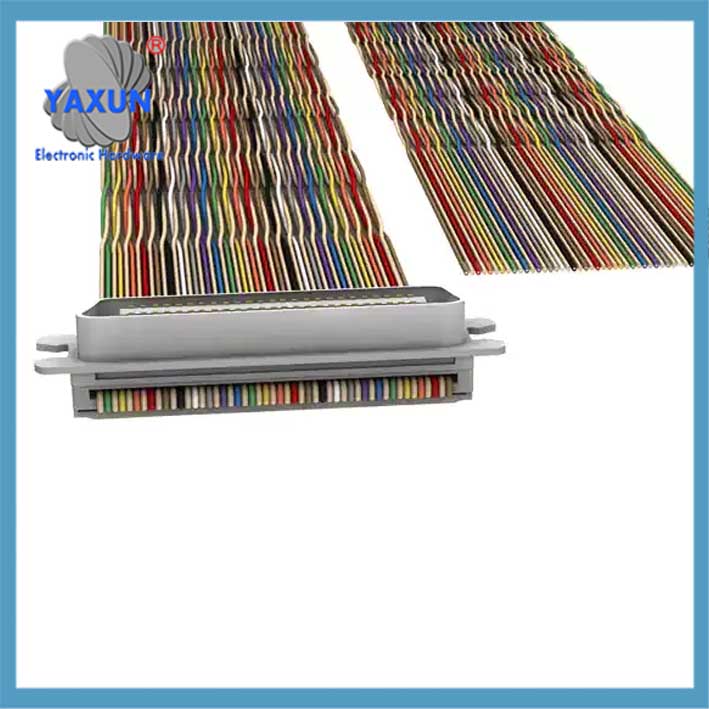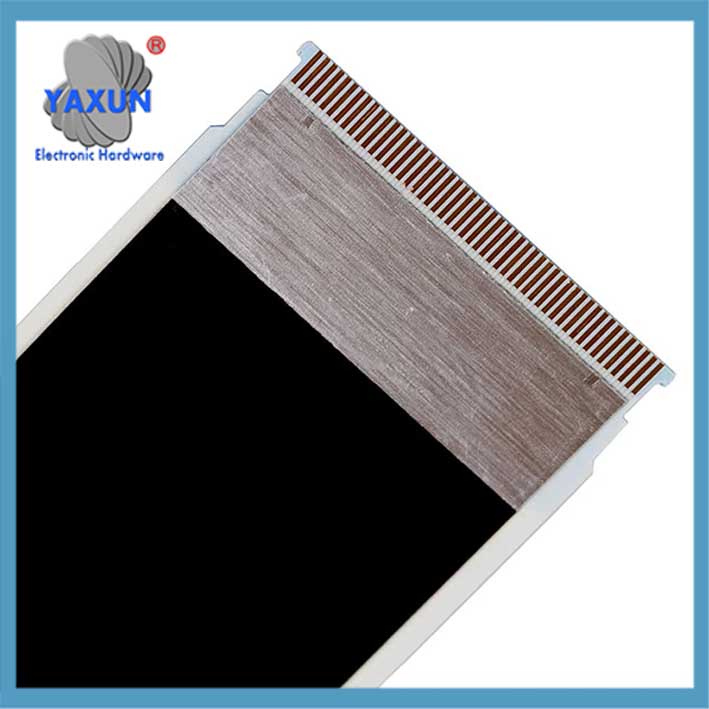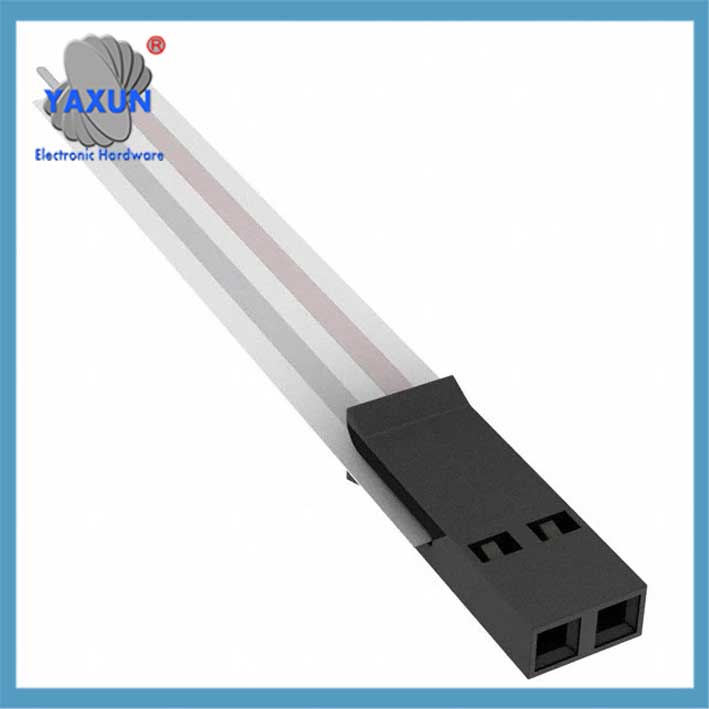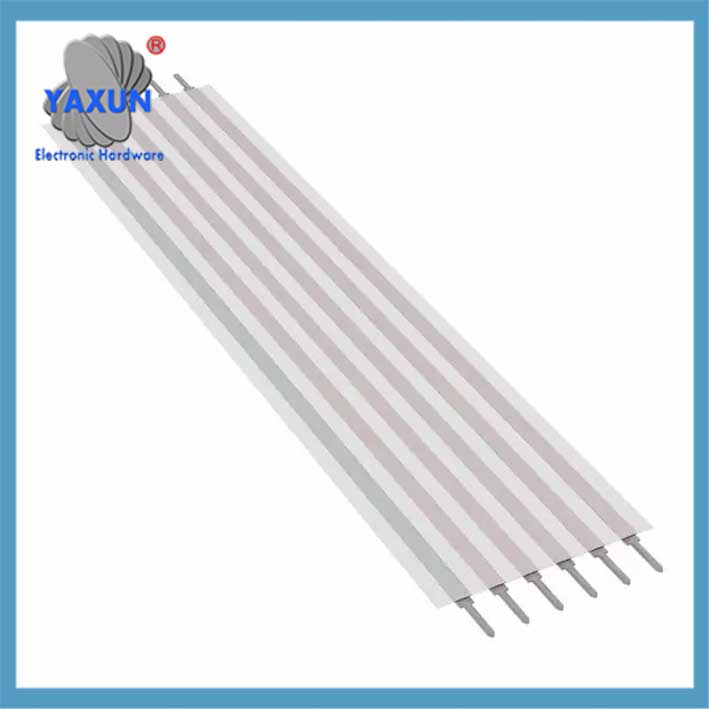Categorías de Producto
- Cables USB4 11
- Cables con clavijas POGO 10
- Cables impermeables 28
- Cables de tipo C y adaptador 40
- Cables USB5 9
- Cables USB con bloqueo de tornillo 26
- Conectores y cables 18
- Arnés de cableado personalizado 33
- Centros 47
- Proveedores de interruptores electrónicos 5
- Cables USB en ángulo 27
- Antena terminal 9
- Cables medicos 37
Etiquetas de producto
Publicaciones recientes
Funciones y aplicaciones de conjuntos de cable planos
Los conjuntos de cables planos se utilizan en diversas aplicaciones eléctricas y electrónicas para proporcionar sistemas de cableado eficientes y organizados. Ofrecen una forma compacta y flexible de administrar múltiples conductores, a menudo utilizado en la electrónica de consumo, equipo industrial, y más. Cables planos, También conocido como cables de cinta o cables planos flexibles, se caracterizan por su piso, forma en forma de cinta y ofrecer ventajas como ahorros de espacio, diseño liviano, y flexibilidad mejorada en comparación con los cables redondos.
Los conjuntos de cables planos se utilizan en diversas aplicaciones eléctricas y electrónicas para proporcionar sistemas de cableado eficientes y organizados. Ofrecen una forma compacta y flexible de administrar múltiples conductores, a menudo utilizado en la electrónica de consumo, equipo industrial, y más. Cables planos, También conocido como cables de cinta o cables planos flexibles, se caracterizan por su piso, forma en forma de cinta y ofrecer ventajas como ahorros de espacio, diseño liviano, y flexibilidad mejorada en comparación con los cables redondos.
Los conjuntos de cable plano juegan un papel clave en muchos campos industriales con sus ventajas estructurales y de rendimiento únicas. La siguiente es una descripción detallada de las dos dimensiones de la función y la aplicación:
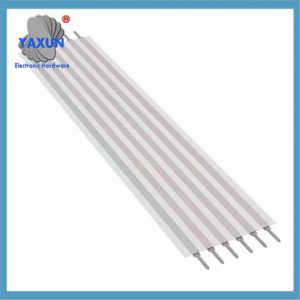 6-Pin Flat Flex Cable Conjunto de soldadura de soldadura a soldadura |
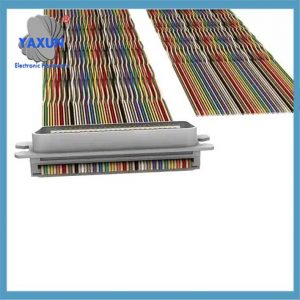 2.54mm 50 Alfiler 50 Camino F-F Conector IDC Flat Rainbow Ribbon |
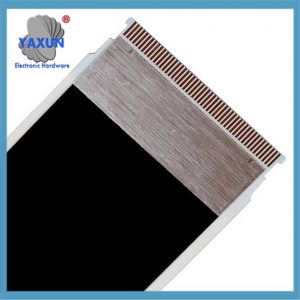 Easy25p70-221133g 25 Posicione el conjunto de cable flexible plano 2.76″ |
1. Características funcionales
Optimización del espacio y cableado eficiente
El diseño de disposición del conductor paralelo de cables planos reduce significativamente la ocupación espacial, Especialmente en equipos pequeños (tales como robots industriales y terminales inteligentes), que puede lograr un cableado eficiente y mejorar la utilización del espacio.
Aptabilidad y durabilidad dinámica
Tiene capacidad de flexión de alta frecuencia (hasta cientos de miles de veces) y resistencia a la tracción para adaptarse a los requisitos de movimiento repetidos de los equipos móviles (como grúas, grúas), Mientras resistente al desgaste, Los materiales resistentes al petróleo y resistentes a la corrosión mejoran la adaptabilidad ambiental.
Estabilidad de transmisión de señalización
Las características de bajo ruido y interferencia anti-electromagnética aseguran la integridad de la transmisión de señal de alta frecuencia y cumplen con los requisitos de transmisión de señal de precisión de los equipos médicos, Electrónica automotriz y otros escenarios.
Diseño consciente
Admite cables de núcleo codificados por colores, arreglo agrupado (Forma recta/de ciruela) y componentes de carga adicionales (como cuerdas de alambre de acero galvanizado) Para una fácil identificación y una mayor resistencia mecánica.
Adaptabilidad a entornos extremos
El trenzado de fibra resistente a alta temperatura o la vaina material especial lo hace adecuado para entornos de radiación a alta temperatura en escenarios de baja temperatura aeroespacial e industrial de -40 ℃~ 70 ℃.
Tipos de conjuntos de cables planos:
Cables de cinta plana:
Estos son el tipo más común y están hechos de múltiples conductores paralelos.
Cables planos flexibles (FFCS):
Estos están diseñados para la flexibilidad y se pueden usar en aplicaciones donde el cable debe doblarse o doblarse.
Circuitos impresos (FPC):
Estos son similares a los FFC pero tienen circuitos impresos en el sustrato flexible.
Ahorro de espacio:
Los cables planos tienen una densidad de embalaje más alta que los cables redondos, haciéndolos ideales para aplicaciones con espacio limitado.
Ligero:
Los cables planos son más ligeros que los cables redondos debido a su diseño y una necesidad reducida de soportes.
Flexible:
Pueden doblarse más fácilmente y ajustarse a espacios apretados, haciéndolos adecuados para varias aplicaciones.
Mejor confiabilidad:
Los cables de cinta plana pueden mejorar la confiabilidad en ciertas aplicaciones debido a su diseño y construcción.
Rentable:
Pueden ser rentables debido a las ventajas de material y fabricación.
Personalización:
Los conjuntos de cables planos se pueden personalizar para aplicaciones específicas, tales como plegado o soldadura directa.
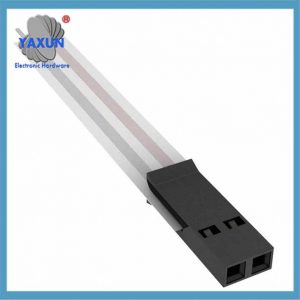 A9bag-0202F 2 pines Conjunto de cable flexible plano |
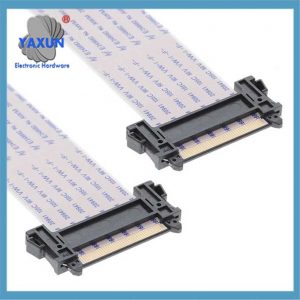 JF08R0R041040UA 41 pines Conjunto de cable flexible plano |
 AFFC-050-30-076-11 FFC,Cable de FPC |
2. Escenarios de aplicación
Electrónica de consumo
Interconexión de alta velocidad entre placas base y pantallas de pantalla y módulos de cámara de terminales inteligentes, como teléfonos móviles y tabletas., ayudando a hacer que el equipo sea ligero y delgado.
Industria automotriz
Admite la transformación de vehículos eléctricos y sistemas de 48V, Conecta ECU, Adas, y equipo de entretenimiento en el vehículo, y cumple con los estándares de resistencia a la temperatura de grado automotriz y resistencia a la vibración.
automatización industrial
Como el centro eléctrico de los robots industriales y los sistemas de control del PLC, Conecta sensores y actuadores para mejorar la estabilidad de la línea de producción y la eficiencia de mantenimiento.
Equipo móvil pesado
Las conexiones de potencia y control de equipos, como grúas de pórtico y grúas, dependen de su alta flexibilidad y resistencia a la tracción para adaptarse al movimiento frecuente y las condiciones de flexión.
Médico y aeroespacial
El equipo de imágenes médicas se basa en su transmisión de bajo ruido, y los sistemas electrónicos de la nave espacial utilizan cables planos especiales que son resistentes a altas temperaturas/radiación para lograr conexiones estables en entornos extremos.
escenario de conexión dinámica
Uso de la tecnología de soldadura ultrasónica, Se logra una conexión confiable con componentes como las barras colectivas, que es adecuado para interfaces eléctricas que deben moverse con frecuencia.
Electrónica de consumo: Utilizado en dispositivos como impresoras 3D, copiar máquinas, y escáneres.
Equipo industrial: Empleado en robots, brazos robóticos, y sistemas de automatización.
Automotor: Utilizado en sistemas de información y entretenimiento de automóviles, Conectores giratorios de interruptor, y otras aplicaciones.
Dispositivos médicos: Utilizado en pantallas médicas y otros equipos.
Aeroespacial: Utilizado en aviones para varias conexiones, incluyendo pantallas y cámaras infrarrojas.
Centros de datos y salas de servidores: Utilizado para el cableado e interconexión dentro de estos entornos.
Pantallas de panel plano: Utilizado en varias pantallas, incluyendo aquellos en televisores y monitores.
3. Tendencia de evolución tecnológica
Con el aplanamiento de la arquitectura de automóviles y la actualización de la automatización industrial, Los conjuntos de cables planos integrarán aún más la tecnología de circuito impreso flexible para promover la miniaturización y el desarrollo inteligente de los sistemas de conexión.
El proceso de ensamblaje generalmente implica conectar conectores a los extremos del cable de cinta plana y puede incluir componentes adicionales o cubiertas de protección. Algunos conjuntos de cables planos se pueden ensamblar con componentes listos para usar, mientras que otros requieren una fabricación más especializada, dice Epec.
En resumen, Los conjuntos de cables planos ofrecen una solución versátil y eficiente para el cableado e interconexión en una amplia gama de aplicaciones. Su flexibilidad, diseño de ahorro de espacio, y la confiabilidad los convierte en una opción popular para las aplicaciones de consumidores e industriales.
Contáctenos
Esperando tu correo electrónico, le responderemos dentro de 12 horas con la valiosa información que necesitabas.
 English
English العربية
العربية bosanski jezik
bosanski jezik Български
Български Català
Català 粤语
粤语 中文(漢字)
中文(漢字) Hrvatski
Hrvatski Čeština
Čeština Dansk
Dansk Nederlands
Nederlands Eesti keel
Eesti keel Suomi
Suomi Français
Français Deutsch
Deutsch Ελληνικά
Ελληνικά עברית
עברית Magyar
Magyar Italiano
Italiano 日本語
日本語 한국어
한국어 Latviešu valoda
Latviešu valoda Bahasa Melayu
Bahasa Melayu Norsk
Norsk پارسی
پارسی Polski
Polski Português
Português Română
Română Русский
Русский Cрпски језик
Cрпски језик Slovenčina
Slovenčina Slovenščina
Slovenščina Español
Español Svenska
Svenska தமிழ்
தமிழ் ภาษาไทย
ภาษาไทย Tiếng Việt
Tiếng Việt

